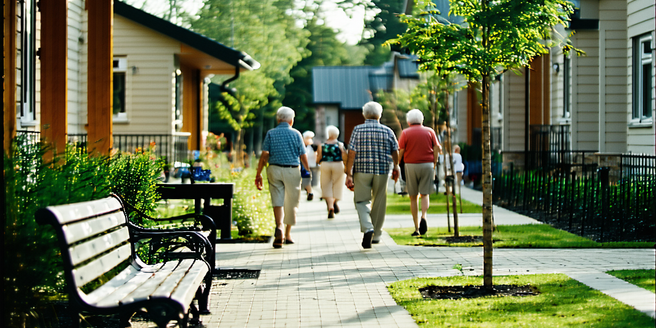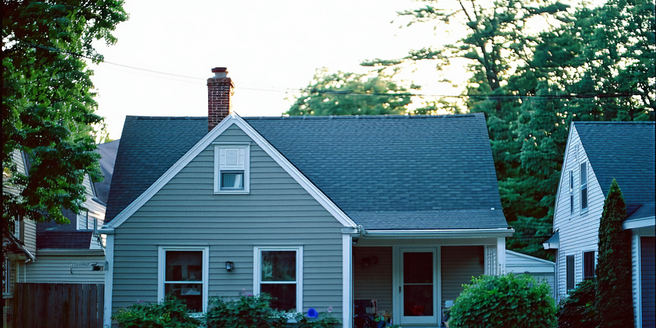Permanent Housing Initiatives

Understanding Housing Solutions
| Aspect | Description | Impact |
| Affordability | Ensures low-income families can secure housing | Reduces homelessness |
| Sustainability | Focuses on long-term viability of housing | Promotes environmental stewardship |
| Accessibility | Includes features for individuals with disabilities | Improves quality of life |
| Community Integration | Fosters inclusive and supportive neighborhoods | Enhances social cohesion |
| Collaboration | Involves multiple stakeholders | Increases resource availability |
| Innovative Design | Encourages novel architectural solutions | Maximizes space use |
The History of Permanent Housing Initiatives
Permanent housing initiatives have a rich and varied history globally, with roots tracing back to early 20th century endeavors aimed at addressing urban housing crises. The post-World War II era marked a significant expansion as governments worldwide began implementing large-scale housing programs to accommodate growing populations and promote economic stability. In the late 20th century, there was a shift toward policies that emphasized not just quantity but also the quality and sustainability of housing. Over time, collaborations between public, private, and non-profit organizations became more common, reflecting a growing recognition that permanent solutions require comprehensive approaches. This historical evolution has laid a foundation for modern initiatives that prioritize affordability, inclusivity, and resilience, as societies continue to adapt to changing demographic and economic landscapes.
Key Challenges in Affordable Housing
Affordable housing faces numerous challenges that can hinder its development and success. One of the primary obstacles is the rising cost of construction materials and land, which can make it difficult to keep housing affordable. Additionally, regulatory hurdles, including zoning laws and lengthy approval processes, can delay or prevent the development of new housing projects. Another significant challenge is the lack of sufficient funding and investment from both public and private sectors to support affordable housing initiatives. Furthermore, social attitudes and perceptions can also act as barriers, as some communities resist the development of affordable housing in their neighborhoods due to misconceptions about its impact. Overcoming these challenges requires strategic planning, collaboration among stakeholders, and a commitment to finding innovative solutions that balance economic realities with social needs.
Innovative Models for Permanent Housing
Innovative models for permanent housing are emerging as essential tools in addressing the complexities of modern housing crises. Co-housing, for instance, fosters community by designing spaces where individuals have private units but share communal areas, thereby reducing costs and enhancing social connections. Another model gaining traction is the use of modular construction, which allows for faster assembly and reduced construction waste, making it a cost-effective and sustainable option. The tiny house movement also presents an innovative solution, with compact designs that minimize living expenses and promote sustainable living practices. Additionally, incorporating renewable energy technologies into housing developments can reduce utility costs and environmental impacts. These models underscore the need for adaptability and creativity in developing housing solutions that meet the diverse needs of communities while considering economic constraints and ecological responsibilities.
Government Roles in Housing Programs
Governments play a pivotal role in housing programs, providing the framework and resources necessary for developing and maintaining permanent housing solutions. Through policies and regulations, governments can incentivize the construction of affordable housing and ensure that developments meet certain standards and requirements. Financially, governments may offer subsidies, tax incentives, and grants to encourage investment in housing projects. Additionally, they have the capability to partner with private sector actors and non-profits to expand the reach and impact of housing initiatives. Beyond financial and regulatory support, governments can also influence housing by investing in related infrastructure, such as transportation and public services, that enhances livability and accessibility. By coordinating efforts across various levels of government and sectors, these roles are critical in ensuring comprehensive strategies that address the diverse housing needs of populations.
Community-Led Housing Solutions
Community-led housing solutions represent a ground-up approach to creating sustainable and customized living environments. These initiatives empower local residents to actively participate in the planning, decision-making, and management processes, ensuring that the resulting housing aligns with the unique needs and aspirations of the community. Such models can take various forms, including cooperatives, land trusts, and self-build projects, often focusing on collective ownership and shared responsibilities. The involvement of community members fosters a sense of ownership and connection, which can lead to higher rates of satisfaction and success. This approach also encourages community resilience, as residents work together to solve problems and maximize available resources. By prioritizing inclusivity and adaptability, community-led housing solutions can effectively address local challenges and contribute to long-term, sustainable urban development.
Impact of Permanent Housing on Society
The impact of permanent housing on society extends far beyond providing shelter, playing a crucial role in enhancing overall quality of life and societal well-being. Stable housing offers individuals and families a foundation from which to pursue educational, economic, and social opportunities, leading to improved health and productivity. Additionally, permanent housing contributes to reducing homelessness and its associated costs, such as emergency services and healthcare. It can foster community stability and cohesion, creating safer and more vibrant neighborhoods where residents are more likely to engage in civic activities. Moreover, secure housing can break the cycle of poverty for many by enabling intergenerational stability and upward mobility. Ultimately, the benefits of permanent housing ripple through society, underscoring the need for continued investment in infrastructure that supports healthy and sustainable communities.
Case Studies of Successful Initiatives
Numerous case studies highlight successful permanent housing initiatives that offer valuable lessons for future projects. For example, the Housing First model, which originated in New York City, has been widely adopted across various regions for its focus on providing stable housing to homeless individuals without preconditions. This approach has led to significant reductions in homelessness and improved outcomes in health and employment. Another noteworthy case is Vienna’s public housing program, where a substantial portion of the city’s residents live in well-maintained, affordable housing complexes, demonstrating effective collaboration between municipal authorities and non-profit partners. In Melbourne, the Nightingale Housing model emphasizes affordability and sustainability, employing community investment to create environmentally responsible and financially accessible housing. These examples illustrate the diverse strategies that can be employed to address housing challenges, emphasizing innovation, collaboration, and dedication to sustaining long-term impacts.
The Future of Permanent Housing Developments
The future of permanent housing developments is poised to embrace both innovation and sustainability as central tenets in addressing the ever-evolving needs of global populations. With urbanization continuing to rise, housing solutions will increasingly incorporate smart technologies, such as IoT devices and energy-efficient systems, to create adaptive and responsive living environments. Additionally, the emphasis on green building practices is expected to grow, with developments prioritizing sustainable materials and designs that reduce carbon footprints and enhance ecological resilience. Mixed-use communities, which integrate residential, commercial, and recreational spaces, are likely to become more prevalent, fostering holistic and dynamic urban experiences. Furthermore, equitable access to housing will remain a priority, leading to greater inclusion of diverse populations in development plans. As technological, social, and environmental trends intersect, the landscape of permanent housing will continue to evolve, creating opportunities for sustainable and inclusive growth.
How to Get Involved in Housing Initiatives
Getting involved in housing initiatives offers individuals and organizations the chance to make meaningful contributions to addressing housing challenges within their communities. One way to engage is by joining or supporting local housing advocacy groups that work to influence policy and promote affordable housing solutions. Volunteering with non-profit organizations that focus on housing development and homeless services can also provide hands-on opportunities to contribute time and skills. For those with financial resources, investing in community land trusts or cooperative housing can help create and maintain affordable housing options. Additionally, attending public meetings and participating in discussions about housing policies can amplify the voices of residents in shaping future projects. Each form of involvement plays a role in promoting the development of sustainable and equitable housing solutions, demonstrating the collective power of communities committed to change.
